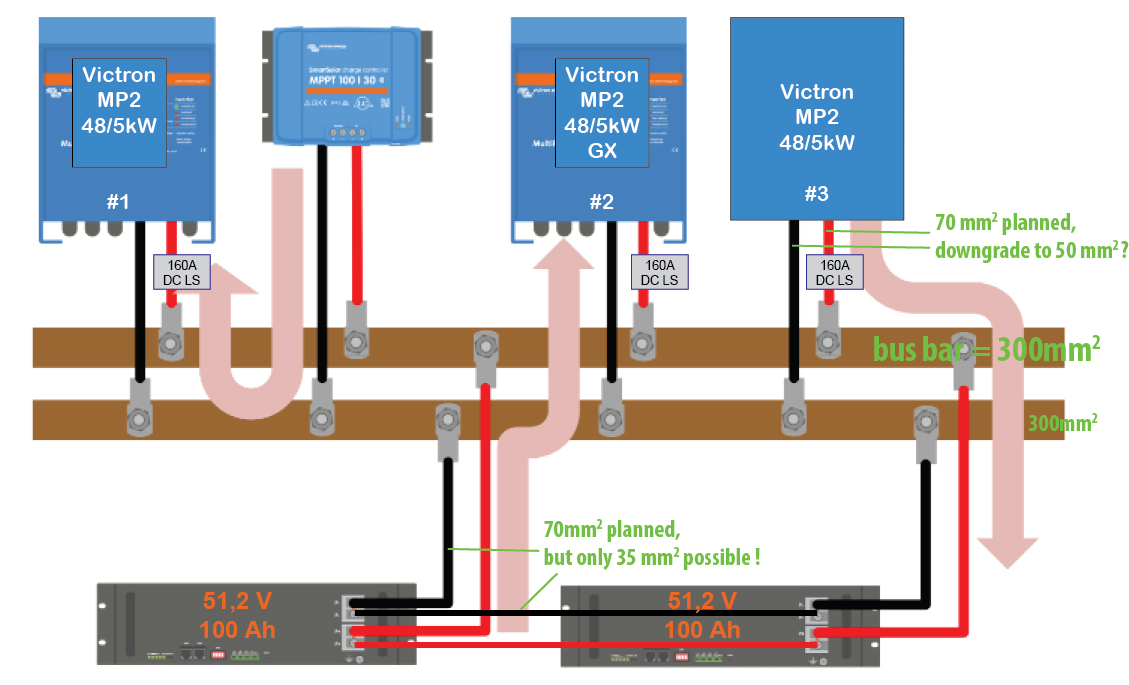Hello,
I have designed a three phase system (3x multi plus, 1 with GX) that are connected to a bus bar and then to a battery rack (10 kWh total) as shown below. The cable wiring from each MP2 to bus bar is 2m, from the bus bar to the battery < 1,5m. According to the manual, I chose for the 48/5000/70s 70mm² wiring.
Now I encountered the following issue during installation: the batteries use proprietary cable connectors that were supplied with the batteries but they can only fit 35mm² wire. I also tried 50mm² wire but it doesn't fit. As shown in the picture, I am already using 2x35mm² for each pole (1 to each battery).
According to wiring guide the cables running from bus bar to battery should be thicker (or equal) gauge than the ones running from bus bar to the MP2s. Given the short distances, does it really matter here? Obviously I could reduce all cable sizes, but that doesn't seem to make sense to me. What is the issue with the battery cables being thinner at 35mm² (given that is the recommended cable section from the manufacturer)? What can I do?
Many thanks!!!

